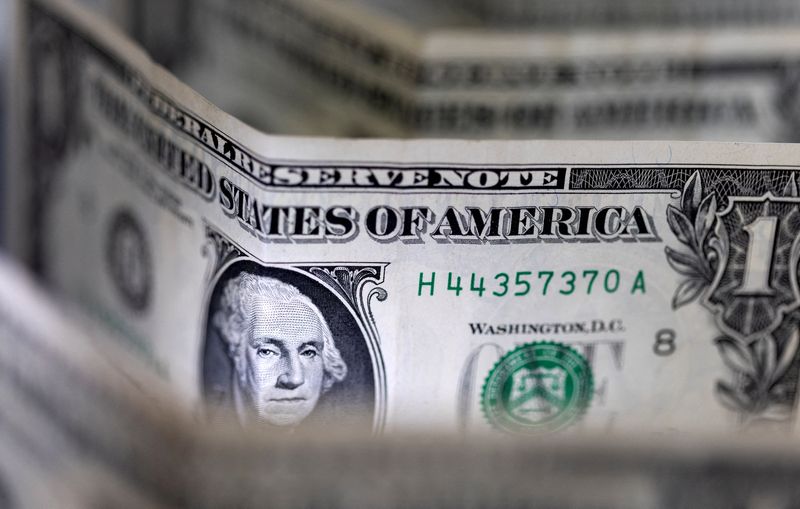 © Reuters
© Reuters
Investing.com - The U.S. dollar firmed in early European trade Wednesday, shrugging off signs of U.S. economic weakness ahead of the release of this week’s key inflation data as traders look for clues as to when the Federal Reserve will start cutting interest rates.
At 04:00 ET (09:00 GMT), the Dollar Index, which tracks the greenback against a basket of six other currencies, traded 0.3% higher at 104.080.
U.S. inflation to prove sticky?
Data released on Tuesday showed that orders for U.S. durable goods fell a hefty 6.1% last month, while the Conference Board's consumer confidence was revised lower for January and declined further in February.
However, these signs of economic weakness have had little impact on the U.S. currency with all eyes on the core personal consumption expenditures price index, the Fed’s favorite inflation gauge, due on Thursday.
Economists are expecting a 0.4% increase for January after 0.2% in the previous month. A stickier-than-expected reading could prompt the Fed to delay rate cuts further.
“We remain of the view that evidence of resilient inflation in the Fed’s preferred measure of inflation will offer more support to the dollar into the end of the week,” said analysts at ING, in a note.
Markets have largely priced out a rate cut at both the Fed's March and May meeting, and the chance of a cut in June is seen as largely 50:50.
Before the PCE data, a second reading on fourth-quarter GDP is due later on Wednesday, while there are more Fed officials due to speak, including Susan Collins, John Williams and Raphael Bostic.
Euro edges lower ahead of eurozone CPI
In Europe, EUR/USD traded 0.2% lower at 1.0818, with Europe also looking forward to its own slew of inflation reports, with Germany, France and Spain scheduled to release price data on Thursday ahead of the eurozone's figures on Friday.
Economists are expecting an annual reading of 2.5% for February, dropping from 2.8% in January.
Still, the dollar trade continues to dominate, and this inflation release will have to provide a major surprise to influence the pair substantially.
“EUR/USD continues to follow the dollar dynamics without showing any material impact from eurozone-specific drivers. The pair looks likely to test 1.0800 in the coming days, in our view,” ING added.
GBP/USD traded 0.4% lower at 1.2635, with sterling hit by a stronger dollar and after recent data showed U.K. grocery prices rising at their lowest rate since March 2022.
Kiwi dollar slumps after RBNZ meeting
In Asia, NZD/USD fell 1.1% to 0.6103, near a two-week low, after the Reserve Bank of New Zealand held interest rates steady at 5.5%, but flagged more progress in inflation moving towards its 1% to 3% annual target.
While the bank still signaled that it will keep interest rates higher for longer in the near-term, its comments saw traders largely price out expectations of any more rate hikes.
USD/JPY traded 0.2% higher to 150.80, with the yen weakening further beyond the 150 level, although steeper losses were limited by the prospect of early interest rate hikes and government intervention.
USD/CNY traded largely unchanged at 7.1993, as traders awaited the release of key purchasing managers index data for February, due this Friday.

